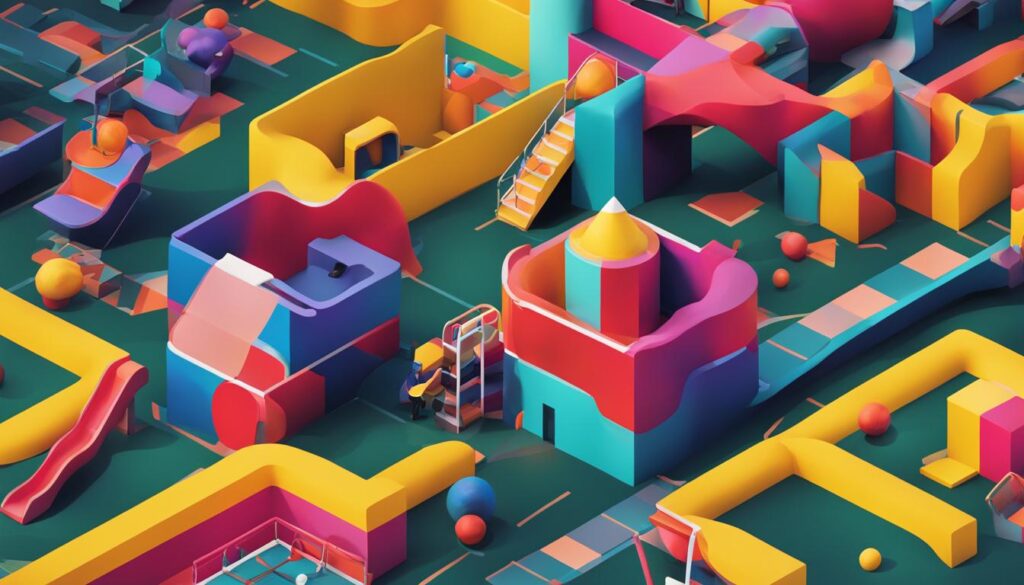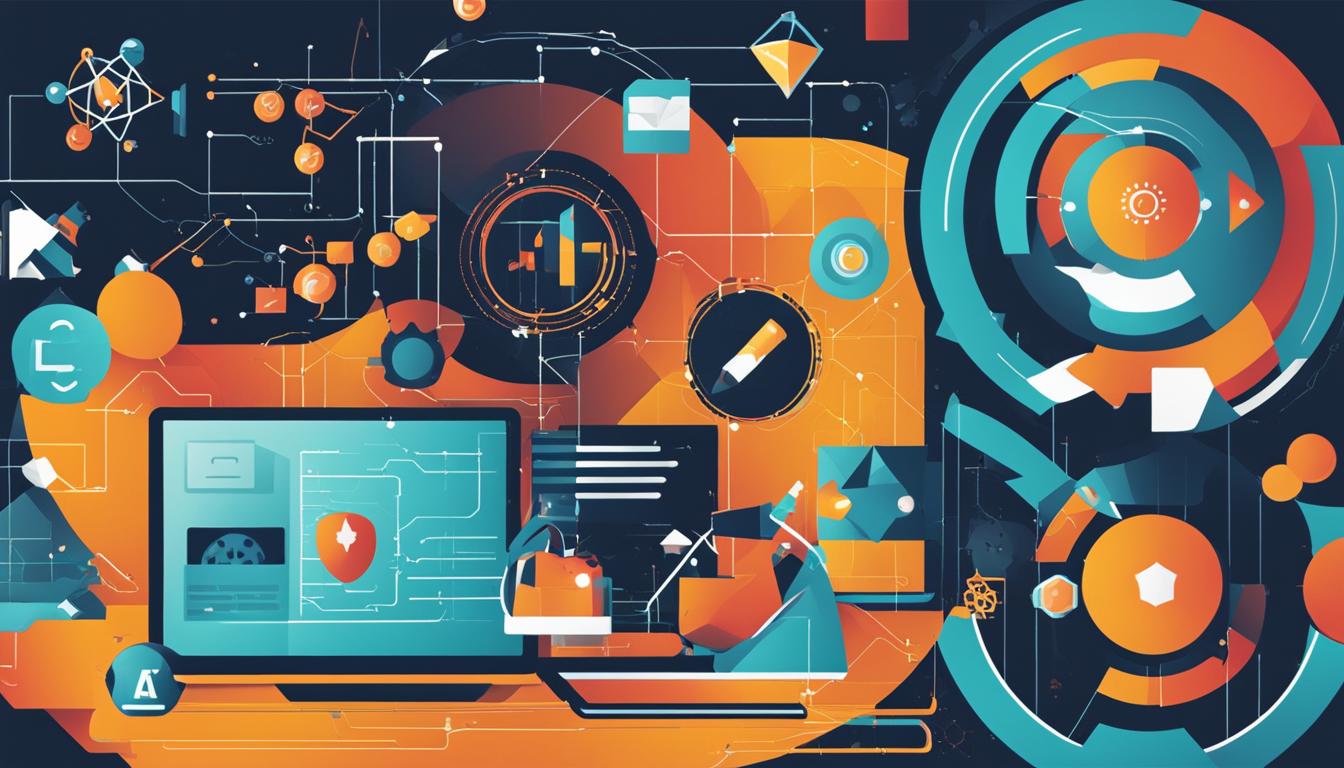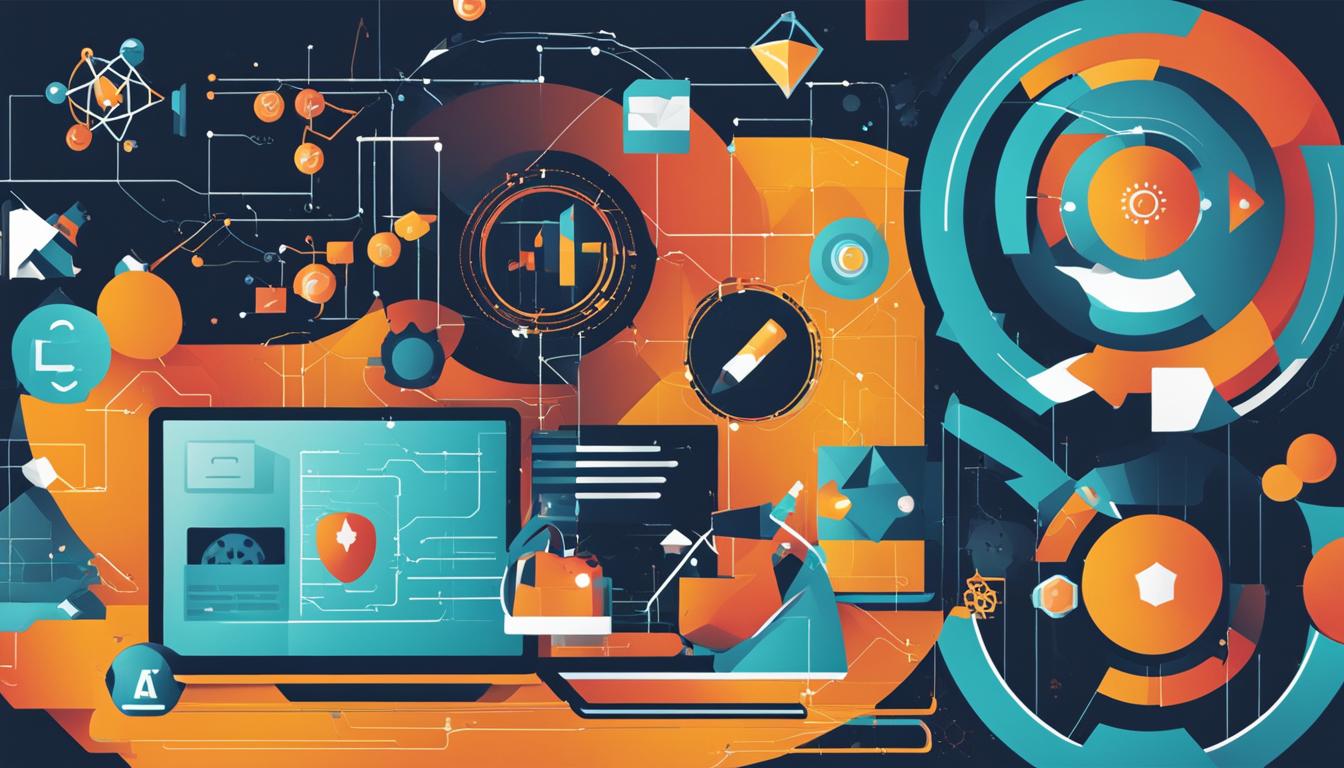Artificial Intelligence has become increasingly advanced, with OpenAI and ChatGPT at the forefront of innovation. While both are remarkable in their own right, it’s essential to grasp the distinctions between them. OpenAI is an AI research and development company, while ChatGPT is a chatbot powered by OpenAI’s language models. By understanding their differences, we can fully appreciate the unique capabilities and applications they bring to the table.
Key Takeaways:
- OpenAI is an AI research and development company, while ChatGPT is a chatbot powered by OpenAI’s language models.
- OpenAI focuses on creating advanced AI models, while ChatGPT utilizes those models in conversational applications.
- OpenAI Playground, a web-based platform, enables users to experiment with various machine learning models.
- ChatGPT excels in generating human-like responses, while OpenAI Playground is versatile for exploring different AI techniques.
- Both ChatGPT and OpenAI Playground have the ability to learn and adapt to new data, tailoring their performance to specific requirements.
Overview of OpenAI
OpenAI is a prominent company in the field of AI research and development. They have developed a variety of powerful language models, including ChatGPT. OpenAI’s models are built on deep learning techniques and have been trained on vast amounts of text data from sources like news articles, books, and social media posts. Their models have the ability to generate human-like responses to text input and have been utilized in various applications, such as chatbots, language translation, and text summarization.
OpenAI’s research and development efforts are focused on pushing the boundaries of AI technology. They continuously work on improving their models, making them more sophisticated, efficient, and capable. OpenAI not only develops AI models but also provides valuable resources for the AI community. They have created platforms like OpenAI Playground, which allow users to experiment with machine learning models, and publish research papers to share their findings with the wider scientific community.
With their innovative approach to AI research and development, OpenAI plays a crucial role in advancing the field and driving the adoption of AI technologies across various industries. Their commitment to openness and collaboration ensures that their advancements benefit not only their own applications but also contribute to the collective knowledge and progress in the AI community.
OpenAI Playground
OpenAI Playground is a web-based platform developed by OpenAI that provides users with the ability to experiment with various machine learning models. It offers a user-friendly interface and tools for building and training AI models, as well as testing and visualizing the results. OpenAI Playground supports different types of models, including neural networks, decision trees, and k-nearest neighbors, making it a versatile tool for exploring different AI techniques.
OpenAI Playground is designed to be accessible to users with varying levels of experience, from beginners to experts. Its intuitive interface and pre-built models allow users to quickly get started and explore different AI algorithms and techniques. Users can adjust various parameters, visualize the model’s performance, and fine-tune the models according to their specific requirements.
Whether you are a seasoned AI researcher or just starting to explore the field, OpenAI Playground provides a valuable platform for learning, experimentation, and development. It empowers users with the tools and resources to gain practical experience and improve their understanding of AI concepts and algorithms.
Introduction to ChatGPT
ChatGPT is an advanced language model developed by OpenAI. Powered by the transformer architecture, this model has the capability to generate human-like responses to text input. Trained on a diverse range of text datasets, ChatGPT exhibits a broad understanding of language and can effectively engage in conversations or perform specific tasks as a chatbot.
With its deep learning algorithms and extensive training, ChatGPT has proven to be a versatile tool for various applications. It can seamlessly interact with users through natural language prompts, providing conversational experiences that mimic human communication. This makes it ideal for chatbot development and other language-based AI applications.
ChatGPT Features:
- Language model based on the transformer architecture
- Trained on diverse text datasets for a comprehensive understanding of language
- Ability to generate human-like responses to text input
- Designed for chatbot applications and conversational AI
ChatGPT’s advanced capabilities and its ability to simulate natural conversations have made it a popular choice among developers and researchers. Its potential applications extend beyond chatbots, with possibilities for language translation, text summarization, and more. As AI technology continues to evolve, ChatGPT remains at the forefront, enabling innovative solutions in natural language processing.

Table: Comparing ChatGPT and Language Models
| Feature | ChatGPT | Other Language Models |
|---|---|---|
| Ability to generate human-like responses | ✓ | ✓ |
| Training on diverse text datasets | ✓ | ✓ |
| Designed for chatbot applications | ✓ | ✕ |
| Applications in language translation and text summarization | ✓ | ✓ |
Basic Concept of OpenAI Playground
The OpenAI Playground is a web-based platform developed by OpenAI that provides users with the ability to explore and experiment with various machine learning models. It offers a user-friendly interface and tools for building, training, and testing AI models, making it accessible to users with different levels of experience. The OpenAI Playground supports a range of machine learning techniques, such as neural networks, decision trees, and k-nearest neighbors, making it a versatile platform for exploring different AI approaches.
One of the key features of the OpenAI Playground is its ability to visualize the results of machine learning experiments. It provides interactive charts and graphs that allow users to understand and analyze the performance of their models. This makes it easier to identify patterns, trends, and anomalies in the data, enabling users to make data-driven decisions in their AI projects.
Advantages of OpenAI Playground:
- Web-based platform: The OpenAI Playground is accessible through a web browser, eliminating the need for complex software installations or setups. Users can access the platform from anywhere using their preferred device.
- User-friendly interface: The platform is designed to be intuitive and easy to use, even for users with limited coding experience. It provides a range of pre-built models and templates that can be customized and adapted to specific needs.
- Experimentation and customization: The OpenAI Playground allows users to experiment with different machine learning models and techniques. They can tweak and fine-tune the models according to their requirements, enabling them to create optimized solutions for their specific applications.
Example table:
| Model | Description | Application |
|---|---|---|
| Neural Network | A type of machine learning model inspired by the structure and function of the human brain. | Image recognition, natural language processing |
| Decision Tree | A flowchart-like model that uses a tree-like structure to make decisions. | Classification, regression |
| K-Nearest Neighbors | A model that classifies new data points based on the majority class of its k-nearest neighbors. | Pattern recognition, anomaly detection |
Whether you’re a beginner looking to learn about machine learning or an experienced practitioner seeking a platform for rapid prototyping, the OpenAI Playground is an excellent tool. It provides a sandbox environment where you can experiment with different machine learning models, algorithms, and techniques, helping you gain valuable insights and improve your AI projects.
Intended Use of ChatGPT and OpenAI Playground
ChatGPT and OpenAI Playground serve different purposes, catering to distinct needs within the field of AI.
ChatGPT
ChatGPT is primarily designed as a language model that excels at generating human-like responses to text inputs. Its main application lies in chatbot development and conversational AI tasks. With ChatGPT, users can engage in natural language conversations, request specific tasks, or explore topics of interest. Its broad understanding of language and ability to generate contextually relevant responses make it a valuable tool for chat-based applications, language translation, and text summarization.
OpenAI Playground
OpenAI Playground is a versatile platform that focuses on experimentation and development of machine learning models. It offers a user-friendly interface and a wide range of tools for building, training, and testing AI models. Users can explore different AI techniques, including classification, regression, and other machine learning tasks. OpenAI Playground allows for customization and optimization of models, making it a valuable resource for developers and researchers at various experience levels.
Understanding the intended use of ChatGPT and OpenAI Playground is crucial in leveraging their respective capabilities in AI projects and applications.

Intended Use
| ChatGPT | OpenAI Playground |
|---|---|
| Chatbot development | Model experimentation and development |
| Conversational AI | Various AI techniques exploration |
| Language translation | Classification and regression tasks |
| Text summarization | Customization and optimization of models |
By utilizing ChatGPT’s language generation capabilities and OpenAI Playground’s flexibility in model development, developers and researchers can harness the power of these tools to create innovative AI applications.
Level of Complexity
When comparing ChatGPT and OpenAI Playground, one crucial aspect to consider is the level of complexity. ChatGPT is a highly complex language model that requires significant computational power and data to train effectively. Its training process involves training on vast amounts of text data from various sources, which allows it to generate human-like responses to text input. The complexity of ChatGPT’s training process enables it to have a broad understanding of language and respond to a wide range of topics.
On the other hand, OpenAI Playground has been designed to be accessible to users with varying levels of experience. It offers a user-friendly interface and pre-built models, making it easy for beginners to experiment with machine learning techniques. The goal of OpenAI Playground is to provide a platform where users can explore and test different AI models without deep knowledge of complex algorithms. While ChatGPT requires a higher level of expertise and computational resources, OpenAI Playground offers a simpler and more approachable environment for experimentation.
It’s important to note that the complexity of ChatGPT and OpenAI Playground serves different purposes. ChatGPT’s complexity enables it to generate sophisticated responses, making it suitable for chatbot applications and language-related tasks. On the other hand, OpenAI Playground’s simplicity allows users to experiment and learn about AI models without being overwhelmed by intricate details. By understanding the level of complexity of these two models, developers and researchers can choose the most appropriate tool for their specific needs.
Comparing Complexity
| Model | Level of Complexity |
|---|---|
| ChatGPT | High |
| OpenAI Playground | Low |
Type of Responses Generated
When it comes to generating responses, both ChatGPT and OpenAI Playground offer distinct capabilities and functionalities.
ChatGPT
ChatGPT, a powerful language model developed by OpenAI, has been trained on diverse text datasets to generate high-quality responses. Its extensive training allows it to generate human-like responses, making it ideal for chatbot applications and conversational AI tasks. However, due to its vast training corpus, ChatGPT may occasionally produce repetitive or nonsensical responses. This is because the training data can contain errors, inconsistencies, and repetition.
OpenAI Playground
OpenAI Playground, on the other hand, is a versatile platform that allows users to experiment with different machine learning models and techniques. Unlike ChatGPT, it does not generate responses directly. Instead, it provides a user-friendly interface for building and training AI models, enabling customization and optimization according to specific requirements. The responses generated by models built on OpenAI Playground depend on the specific model architecture and training data used.
Overall, while ChatGPT excels in generating human-like responses, OpenAI Playground offers flexibility and customization for creating tailored models. Understanding the differences between the two can help developers choose the most suitable solution for their AI projects.
| ChatGPT | OpenAI Playground |
|---|---|
| Trained on diverse text datasets | Platform for building and training AI models |
| Generates human-like responses | Responses depend on model architecture and training data |
| Possible repetitive or nonsensical responses due to training corpus | Offers flexibility and customization |
Adapting to New Data
Both ChatGPT and OpenAI Playground have the ability to learn and adapt to new data, allowing for continuous improvement and customization.
ChatGPT:
ChatGPT can be fine-tuned on new data, enabling it to enhance its responses over time. Fine-tuning involves training the model using a specific dataset that is relevant to the desired application or domain. By exposing ChatGPT to new data, it can become more accurate and contextually aware, resulting in more meaningful and coherent responses.
OpenAI Playground:
OpenAI Playground also supports training models on custom datasets, providing users with the flexibility to create optimized models for their specific applications. This enables developers to experiment with different data sources and refine the performance of their models. By incorporating new data into the training process, OpenAI Playground allows for the exploration of various AI techniques and the development of tailored solutions.
Both ChatGPT and OpenAI Playground demonstrate the importance of adaptation and learning from data in the field of AI. The ability to leverage new data sets these models apart, empowering developers and researchers to continuously improve and innovate in their AI projects and applications.
Conclusion
In conclusion, OpenAI Playground and ChatGPT are two powerful AI models that serve different purposes in the field of artificial intelligence. ChatGPT, as a language model, specializes in generating human-like responses to text input and is commonly used in chatbot applications and language-related tasks like translation and summarization. On the other hand, OpenAI Playground is a versatile web-based platform that allows users to experiment with a wide range of machine learning models and techniques.
OpenAI Playground provides a user-friendly interface for building, training, and testing AI models. It supports various machine learning algorithms, making it suitable for exploring classification, regression, and other tasks. It is designed to be accessible to users with varying levels of experience, from beginners to experts. With pre-built models and visualization tools, it enables users to experiment and iterate on their AI projects efficiently.
Understanding the differences between OpenAI Playground and ChatGPT is crucial for developers and researchers who want to leverage AI technologies effectively. While ChatGPT excels in generating human-like responses, OpenAI Playground offers a more comprehensive platform for machine learning exploration and development. By utilizing these tools appropriately, AI practitioners can unlock the full potential of AI in their applications and contribute to the advancement of the field.
The History of Generative AI Models
Generative AI models have a rich history that can be traced back to the mid-20th century. The development of these models has been influenced by key milestones and advancements in the field of artificial intelligence. One of the significant milestones was the introduction of the Turing test in 1950 by Alan Turing. This test laid the foundation for evaluating a machine’s ability to exhibit intelligent behavior indistinguishable from that of a human.
Over the years, natural language processing algorithms have played a vital role in the advancement of generative AI models. These algorithms enable machines to understand and generate human-like text, leading to the development of more sophisticated language models.
One of the breakthroughs in generative AI models was the introduction of recurrent neural networks (RNNs). RNNs, with their ability to process sequential data, opened up new possibilities for modeling and generating text. However, it was the transformer model, introduced in 2017, that truly revolutionized the field of natural language generation. Transformers made it possible to capture long-range dependencies and generate coherent and contextually relevant text.
OpenAI and Azure OpenAI Partnership
OpenAI, a prominent company in the field of AI research and development, has joined forces with Microsoft to form a strategic partnership. This collaboration aims to harness the power of Microsoft’s Azure infrastructure to make OpenAI’s cutting-edge AI models accessible through Azure services.
Azure OpenAI Service, a cognitive service offered by Microsoft, provides developers with API access to OpenAI’s language models. This integration allows developers to seamlessly incorporate OpenAI’s models, including GPT-3 and Codex, into their own applications.
OpenAI’s language models have been instrumental in the development of advanced AI capabilities like chatbots and code generation tools. Through the OpenAI and Microsoft partnership, these models become more accessible, enabling developers to create innovative and intelligent applications that leverage the capabilities of OpenAI’s AI technology.
FAQ
What is OpenAI?
OpenAI is a company that focuses on AI research and development.
What is ChatGPT?
ChatGPT is a chatbot powered by OpenAI’s language models.
What is OpenAI Playground?
OpenAI Playground is a web-based platform developed by OpenAI that allows users to experiment with various machine learning models.
What is the intended use of ChatGPT?
ChatGPT is primarily designed to generate human-like responses to text input and is often used in chatbot applications or for tasks such as language translation and text summarization.
What is the intended use of OpenAI Playground?
OpenAI Playground is focused on the experimentation and development of machine learning models. It is used to explore and test different AI techniques, including classification, regression, and other machine learning tasks.
How complex is ChatGPT?
ChatGPT is a highly complex language model that requires significant computational power and data to train.
How accessible is OpenAI Playground?
OpenAI Playground has been designed to be accessible to users with varying levels of experience, from beginners to experts. It offers a user-friendly interface and pre-built models.
What type of responses does ChatGPT generate?
ChatGPT has the ability to generate high-quality responses to text input, but it may occasionally produce repetitive or nonsensical responses.
Can ChatGPT and OpenAI Playground learn from new data?
Yes, both ChatGPT and OpenAI Playground have the ability to learn and adapt to new data.
What is the history of generative AI models?
Generative AI models have a long history that dates back to the mid-20th century, with key milestones such as the introduction of the Turing test and advancements in neural networks.
What is the partnership between OpenAI and Microsoft?
OpenAI and Microsoft have formed a partnership to make OpenAI’s AI models accessible through Azure services, resulting in the Azure OpenAI Service.
 Skip to main content
Skip to main content


